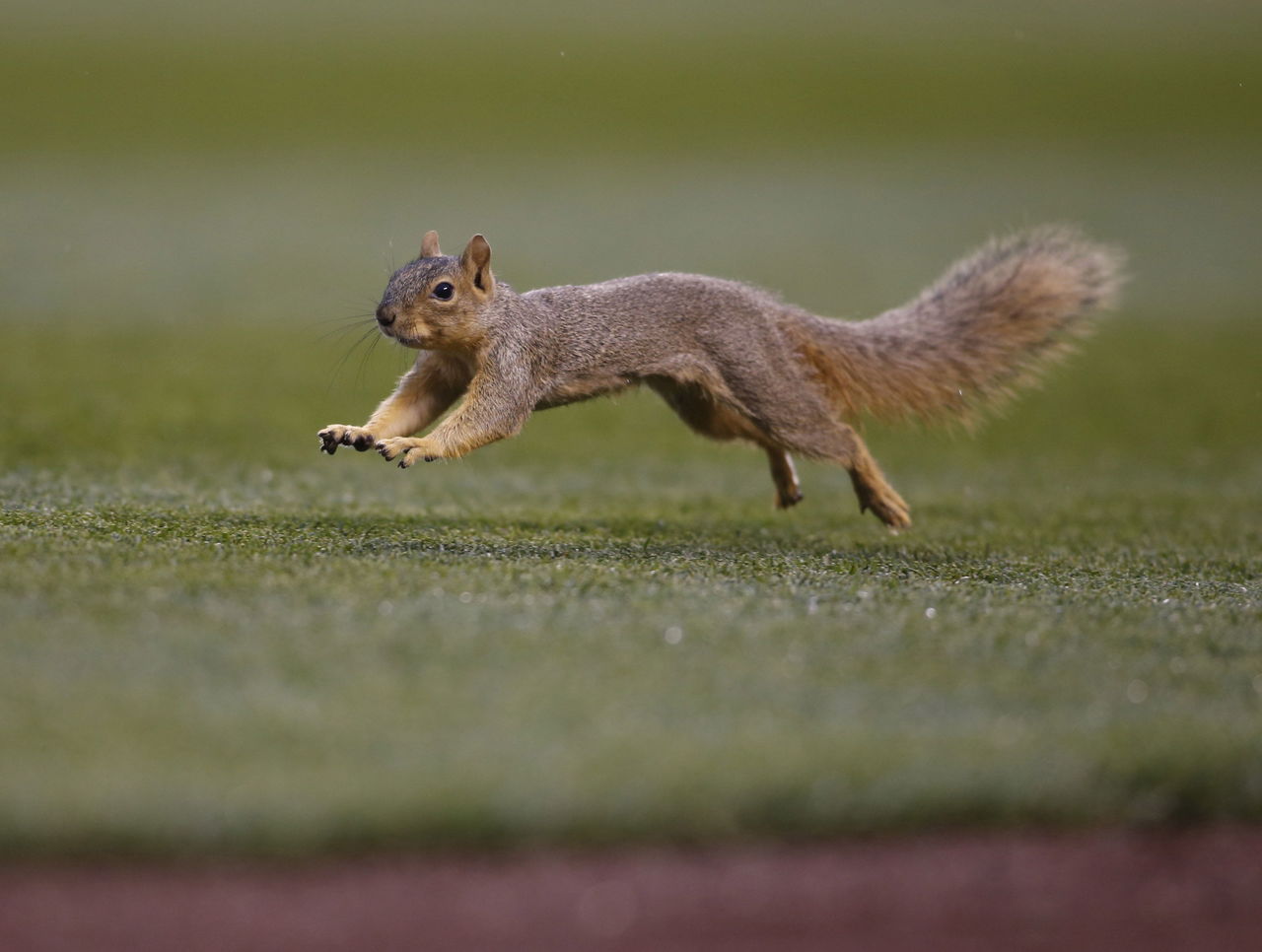Squirrels, those energetic and acrobatic creatures we often see darting up trees or scurrying across lawns, are known for their speed and agility.
Whether you’re observing one frantically searching for food or racing to evade a predator, it’s clear that squirrels have impressive physical abilities.
But how fast exactly can these small mammals run?
In this article, we’ll explore the speed of squirrels, factors that influence their running capabilities, and how their agility helps them thrive in various environments.
Average Speed of a Squirrel
Squirrels are surprisingly quick runners for their size. On average, a squirrel can run at speeds of up to 20 miles per hour (32 kilometers per hour) in short bursts.
This speed is impressive considering their relatively small size—most squirrels weigh between 1 and 1.5 pounds (450 to 680 grams).
Their ability to accelerate quickly and maintain speed over short distances helps them evade predators and navigate their environment with ease.
This running speed is especially notable when compared to other small mammals.
For instance, a rabbit can reach speeds of 35 to 45 miles per hour, but a squirrel’s agility, combined with its speed, gives it an edge in escaping danger.
Factors That Affect a Squirrel’s Running Speed
While 20 miles per hour is the general maximum speed a squirrel can achieve, several factors influence how fast they can run in a given situation. Here are a few key factors that come into play:
- Species of Squirrel
There are over 200 species of squirrels, and while most can reach similar top speeds, some species may be faster or slower depending on their physical traits. For example, the tree-dwelling Eastern Gray Squirrel (Sciurus carolinensis) and the Fox Squirrel (Sciurus niger) are known to be particularly agile and fast runners, while ground squirrels tend to be slightly slower due to their more limited environment. - Terrain
A squirrel’s environment plays a major role in its ability to run at top speed. On flat ground or open terrain, squirrels are able to run faster, but they are even faster when navigating up and down tree trunks. Squirrels have strong, sharp claws and muscular hind legs that allow them to climb trees effortlessly, and their speed increases when they are able to climb or jump between trees and branches. Running on an uneven or rocky surface can slow them down significantly. - Predators and Threats
The presence of predators is one of the main reasons squirrels run so fast. They rely on their speed to escape from potential threats such as hawks, snakes, and other carnivores. In moments of extreme danger, a squirrel may even accelerate beyond its usual top speed, driven by an adrenaline rush. - Age and Health
A squirrel’s age and physical condition can also impact its speed. Young, healthy squirrels tend to be quicker than older ones or those that are injured or unwell. In addition, the species’ natural habitat can influence their fitness levels. Urban squirrels, for example, may have to navigate busy environments that require more energy but may not offer the same level of physical exertion as wild habitats.
Squirrel Agility: More Than Just Speed
While squirrels can run fast, their true advantage lies in their agility.
A squirrel’s running speed is just one part of its impressive set of survival skills.
Their ability to quickly change direction, leap from tree to tree, and perform acrobatic maneuvers gives them an edge over predators and competitors.
Squirrels are also exceptional climbers and jumpers. They can leap distances up to 10 feet (3 meters) between trees, using their powerful hind legs to launch themselves across open spaces.
This impressive combination of speed and agility makes it extremely difficult for predators to catch them, especially in forested or urban environments with plenty of cover.

How Squirrels Use Their Speed to Survive
Squirrels use their speed and agility in several ways to ensure their survival:
- Evading Predators
Whether it’s a hawk in the sky or a dog on the ground, squirrels rely on their speed to escape potential threats. When a predator is nearby, squirrels will often bolt quickly, running in unpredictable directions to throw off their pursuers. - Searching for Food
Squirrels are known for their foraging habits, and their speed helps them cover large areas in search of nuts, seeds, and fruits. They can rapidly dash from one tree to another, leaping across branches to find food sources in a wide radius. - Territorial Defense
Squirrels can be territorial and use their speed to establish and defend their territory. In some cases, squirrels will race other squirrels or chase them away from their preferred feeding spots or nesting areas. - Escaping from Traps
Squirrels are also known to be cunning and quick to avoid traps, especially those set by humans or predators. Their ability to move quickly and react to changes in their environment makes them adept at escaping danger, even in human-populated areas.
Conclusion
In summary, squirrels are fast, agile creatures capable of reaching speeds of up to 20 miles per hour.
Their quick bursts of speed, combined with their impressive climbing abilities and acrobatic skills, make them some of the most agile mammals in the animal kingdom.
Whether it’s evading predators, foraging for food, or navigating through complex environments, squirrels rely on a combination of speed, agility, and intelligence to thrive in the wild.
So, the next time you spot a squirrel scurrying across the ground or leaping through the trees, remember: it’s not just their speed that makes them remarkable, but their ability to outmaneuver and adapt to the world around them.



